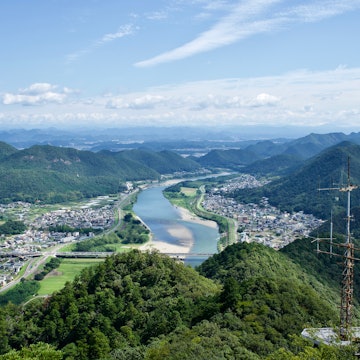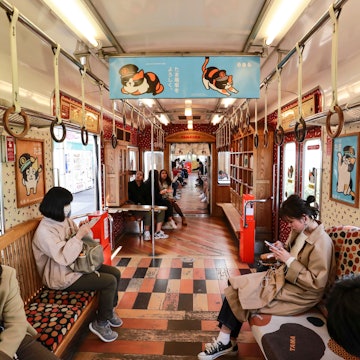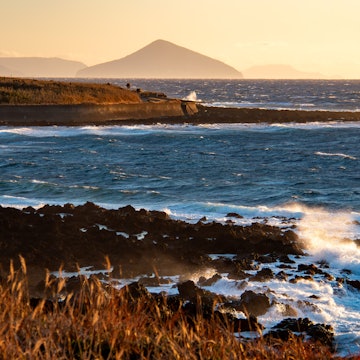

I'd been in Japan for only three days when my friend and tour guide (who is fluent in Japanese) delivered the bad news. 'I need to return to the US tomorrow,' he said. 'It’s an emergency.' I understood completely, but I felt vulnerable. In 24 hours I would be lost in translation. But armed with some helpful key phrases, an open mind and positive attitude, I was ready for a grand adventure in Japan.

The author, Ashley Lyn Olson, travelling solo in Kyoto. Image courtesy of Ashley Lyn Olson at wheelchairtraveling.com.
Destination Kyoto: train travel in Japan
Fortunately for me and any other wheelchair traveller, the Japanese train system is highly efficient and wheelchair friendly – one of the best, if not the best, in the world. The stations alone are a great resource for wheelchair travellers, as most have accessible restaurants and restrooms, not to mention convenience stores.
I set out to Kyoto, about two hours from Tokyo on the shinkansen (bullet train). I confirmed with an attendant that I would need assistance on to the train – a good habit to get into because you never know how large the gap from the train to the platform will be. This not only removed the uncertainty, but also saved time because I was personally escorted to the correct platform and car I needed. The attendant then called the station at my destination to make arrangements for a ramp when I arrived.
On the shinkansen and other long-distance trains, there is a marked wheelchair accessible car with widened doorways, spaces for wheelchairs and an accessible restroom. On the shinkansen there is also a 'multipurpose room', used for overflow. The first time I boarded a shinkansen, the wheelchair space was already taken so I was placed in this room, which turned out to be my own private suite! On the return trip, even though the wheelchair space was vacant, I requested the multipurpose room and it was given without question.

Navigating a train station in Japan. Image courtesy of Ashley Lyn Olson at wheelchairtraveling.com.
Elevators, accessible toilets and more
Travellers with disabilities will experience some excellent facilities in Japan. For example, bathrooms for people with disabilities, in hotels and public places, had some wonderful design and function elements to them.
Japan is also the originator of using tactile paving (truncated domes) on sidewalks and train stations to help the blind navigate. Half the time these truncated domes lead to an elevator, which is a handy tip for wheelchair users in a foreign country.
I loved the fact that every single elevator I saw had a priority button for wheelchair users. When there was more than one elevator, one was usually marked 'priority'. (I used elevators heavily and only saw the priority system abused about five times.) Over half of the time the priority elevator was the faster of the two, but I got in the habit of pushing both sets of buttons for optimal results.

Tactile paving on the streets of Japan. Image courtesy of Ashley Lyn Olson at wheelchairtraveling.com.
Wheelchair size in Japan
While there are some great amenities in Japan, one potential challenge to consider is wheelchair size. In the United States somehow bigger is considered better: bigger houses, bigger burgers, bigger cars and bigger power wheelchairs. But in Japan, small wheelchairs reign supreme.
Japan has a large population of petite people and many buildings reflect this. So to navigate this world, you need a smaller chair. Instead of a power wheelchair the size of a jet-ski, the Japanese use manual wheelchairs and add power to them. This style of wheelchair allows for those who need the extra power to go to more places and fit in tiny spaces.
In general, I saw over a dozen people in wheelchairs including manual wheelchair users, elderly people in hospital-style wheelchairs and even a few larger power wheelchairs similar to the Jazzy Scooter. So it’s not to say that it is impossible to travel to Japan with a big power wheelchair, it’s just that it will have less manoeuvrability in some places or no access at all, namely in hotel rooms, restaurants and stores compared to manual wheelchairs.
A helping hand in Nara
About an hour’s train ride from Kyoto is Nara, well known for its free-roaming tame Sika deer as well as many temples and shrines. On the way to the Kasuga Taisha shrine the pathway became a thick mass of pebbles which I found tiring, but I was determined to reach the shrine. Along the way I was greeted by a Japanese family and asked if I wanted a push. 'Yes!' (hai) I replied in Japanese.

Lanterns swaying in the dazzling Kasuga Taisha shrine. Image by Haruhisa Yamaguchi / Moment / Getty Images.
When we reached the base of the shrine, I was daunted by literally hundreds of stairs. The father scratched his head thinking of a solution. Less than a minute had passed when a young American offered his assistance and, together, they hoisted me up in the air in my wheelchair to conquer the staircase. It's no exaggeration to say that I felt like Cleopatra!
When we had finished at the shrine, the father asked about my plans. He explained they could drive me wherever I wanted to go in Nara. I gladly got into the car without hesitation and together we headed to the Hōryū-ji — a World Heritage site and one of the oldest wooden temples in Japan with a five-storey pagoda (not to mention wheelchair ramps and an accessible restroom). Pure goodness of human spirit radiated from this family as we made conversation as best we could, despite the obvious language barrier. The father didn’t allow me to pay for anything, including my lunch and ticket into the temple. The kindness and generosity of these strangers was overwhelming, but not out of the ordinary in Japan.

The ancient wooden Hōryū-ji in Nara. Image by Mith Huang / CC BY 2.0.
The kindness of strangers
My favourite day in Japan was in Kyoto's Arashiyama District. Kyoto is filled with temples and shrines, and has a famed castle and well-known and ancient geisha district, Gion, but Arashiyama is especially picturesque. I visited a few temples and shrines — all with partial or no accessibility — I had lunch and then wandered to the bamboo grove after seeing it on a map I picked up at the trolly station.
Along the paved but often steep trail I met an old man in his 70s with a long peppered beard — the kind you might see on a martial arts master or seasoned fisherman in a Japanese movie. He was displaying a dozen postcards of painted landscapes. I asked the man if he was the artist. Grinning from ear to ear he replied, 'Well, yes!' in perfect English.
We sat under the bamboo for a few minutes to chat. He started to say something in English but ended his thought in Spanish. When I giggled, he froze for a moment with a puzzled look on his face before breaking into childlike laughter. Out of all the Japanese people I met, this old gentleman had the best English and a smile I’ll never forget. I was reminded that the greatest rewards of travel come from being open to new people and experiences.

The neck-craning bamboo grove in Kyoto's Arashiyama district. Image by Dom Crossley / CC BY 2.0.
Practical tips for travellers to Japan
Public transport and getting around. Travelling by train usually allowed me to get very close to attractions in Japan — find more tips on accessible transport and getting around Japan at wheelchairtraveling.com/wheelchair-accessible-public-transportation-in-japan. Otherwise there was usually an option to take a bus or, more expensively, a taxi. For the most part, I found the terrain very flat although there were times I had to roll up a hill to reach my destination — which I did at a very slow pace. Browse a list of wheelchair-accessible sites in Japan at wheelchairtraveling.com/visit-wheelchair-accessible-attractions-in-japan.
Asking for help. I looked for eye contact as a clear sign of whether or not to approach. To ask for help, I simply smiled and said in Japanese, 'Excuse me' (sumimasen), showing the person a map and where I wanted to go. Check out a list of helpful keywords and phrases at wheelchairtraveling.com/wheelchair-travel-guide-to-japan.
When to go. I travelled to Japan during the hottest season of the year and at the tail-end of typhoon season (end of July to early August). If I were planning the trip again, I would travel during autumn or spring for milder weather. Those that are not able to perspire should strongly consider this because the humidity of the summer months is intense.
Want more accessible travel inspiration, or looking to share your own tips? Join our Travel for All project on Google+.















